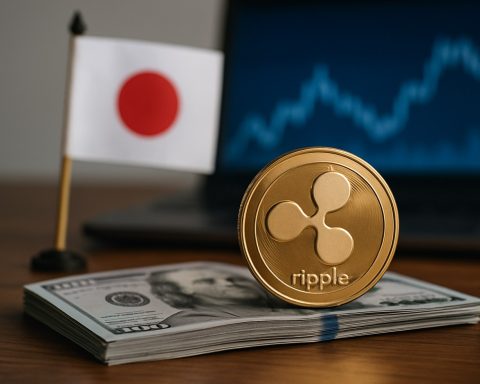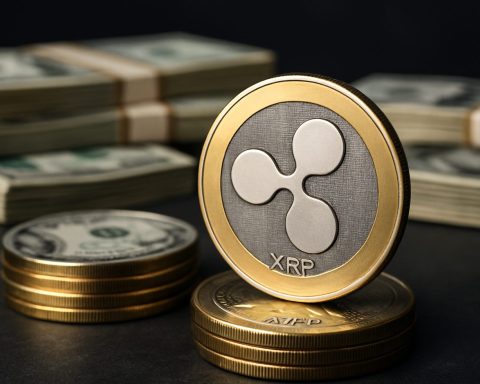- The quantum computing market is projected to grow to $170 billion by 2040, with major advances from industry leaders.
- Alphabet’s Willow quantum processor achieves “quantum supremacy,” showcasing the company’s leadership in quantum technology.
- Microsoft aims for a million-qubit processor with its Majorana 1 chip, built on topological superconductors for transformative applications.
- IBM combines quantum hardware with hybrid-cloud solutions, achieving commercial success with nearly $1 billion in revenue since 2017.
- Startups like IonQ and D-Wave innovate with trapped-ion technology and quantum annealing, targeting specific industry challenges.
- Nvidia’s CEO advises patience, predicting significant quantum computing breakthroughs are two decades away.
- Investors face choices between high-risk investments in pure-play companies and stability from established tech giants like Alphabet, IBM, and Nvidia.
- The quantum computing landscape promises revolutionary change, requiring a long-term perspective for both technologicial and investment strategies.
A technological tempest is gathering on the horizon, led by titans of the tech industry and ambitious startups, as they delve into the enigmatic realms of quantum computing. With its promise of revolutionizing problem-solving far beyond the capabilities of today’s supercomputers, the quantum computing market is projected to surge to a staggering $170 billion by 2040.
Alphabet, the parent of Google, stands at the forefront with its recent revelation: the Willow quantum processor. A landmark achievement, the Willow processor reportedly reached “quantum supremacy,” executing calculations that traditional supercomputers deem impossible. This heralds Alphabet’s burgeoning prowess in the quantum sphere, underscoring its decade-long journey into this uncharted territory.
Not to be overshadowed, Microsoft has also leaped into the quantum fray with its Majorana 1 chip. Employing an innovative approach built on topological superconductors, this development marks a critical step toward Microsoft’s audacious aspiration of a million-qubit processor. Such a feat is seen as essential for unlocking transformative quantum applications.
Meanwhile, IBM has quietly yet effectively forged its path in the quantum domain. With a commercial presence that has generated almost $1 billion since 2017, IBM merges the tangible—quantum hardware—with the abstract, through hybrid-cloud solutions and open-source development kits. Their strategic integration of these elements sets a robust foundation for future advancements.
Amidst these industry giants, nimble contenders like IonQ and D-Wave are capturing attention and investment. IonQ’s trapped-ion technology creates qubits that boast stability and precision. As the company experiences explosive growth, doubling its revenue yearly, it draws a contrast with D-Wave’s expertise in quantum annealing. This distinct focus allows D-Wave to address optimization challenges that perplex logistic and manufacturing sectors.
These aspirations, however, face the grounding perspectives of voices like Nvidia’s Jensen Huang, urging patience for a dawn still 20 years away. Yet, the very nature of quantum computing—its boundless potential and equally daunting challenges—fuels an enthusiasm that oscillates markets and tempers expectations.
For investors, the quantum computing sector presents a multifaceted landscape: the allure of high-stakes, pure-play investments against the stability of established giants offers varied risk profiles. While companies such as IonQ present the thrill of direct quantum exposure, their volatility reflects the nascent industry’s unpredictability.
In contrast, well-entrenched tech behemoths like Alphabet, IBM, and Nvidia provide a cushion of diversified strength, promising longevity within their vast operational landscapes. Their capacity to absorb and recover from setbacks further cements their poised stance as we inch closer to the reality of quantum computing.
In this race that redefines computing itself, the era of quantum innovation teeters on the brink of rapid evolution. Yet, it urges a steady hand, a long-term view that sees beyond momentary valuations into a future where quantum technology reshapes the very fabric of possibility.
A Quantum Leap: Navigating the Future of Computing
The Quantum Computing Revolution: An In-Depth Exploration
Quantum computing stands as either the dawn of new computing potential or a distant horizon still over two decades away, depending on whom you ask. Despite this uncertainty, momentum builds as significant technological leaps occur, with leading industry players, ambitious startups, and cautious investors positioning themselves at its precipice.
How Quantum Computing Differs From Classical Computing
Traditional computers use bits as the smallest unit of data, which exist as either 0 or 1. In stark contrast, quantum computers employ qubits that utilize quantum phenomena like superposition and entanglement. This allows qubits to exist in multiple states simultaneously, potentially performing calculations far more efficiently than classical computers.
Market Forecast: A $170 Billion Industry by 2040
It’s crucial to understand the projected growth in investment and utility within the quantum sector. According to a recent market analysis, the quantum computing market is expected to explode from its current nascent state to a formidable $170 billion industry by 2040. This underscores the transformative potential of this technology, offering opportunities for both novel applications and vast economic value.
Key Players Making Quantum Waves
# Alphabet (Google)
– Willow Quantum Processor: Achieved “quantum supremacy,” far surpassing traditional supercomputers in certain calculations. Alphabet‘s investment signifies not just innovation but a strategic leap in computational prowess.
# Microsoft
– Majorana 1 Chip: Uses topological superconductors, aiming for a scalable quantum system with a million qubits. This ambition is critical for running large-scale quantum applications.
Microsoft‘s efforts here emphasize their aim for both innovation and commercial scalability.
# IBM
– Leveraging a hybrid approach integrating cloud solutions and open-source development, IBM stands out for its commercial strategy and foundational hardware innovations since 2017. Their revenue nearing $1 billion from quantum computing highlights sustained growth. IBM continues to bridge classical and quantum technologies, positioning itself as a key leader in practical quantum applications.
# Emerging Startups
– IonQ: Known for trapped-ion technology, IonQ focuses on stable and precise qubits, doubling its revenue yearly, driven by its rapid technological advancements.
– D-Wave: Specializes in quantum annealing, aiming at solving complex optimization problems, notably in logistics and manufacturing. D-Wave‘s approach caters to challenges eluding other quantum competitors.
Potential Challenges and Limitations
1. Quantum Error Correction: This remains one of the most significant hurdles. Managing error rates within quantum computers is paramount for reliable and scalable systems.
2. Scalability: Achieving a processor with a large number of qubits necessitates overcoming technical challenges that have inhibited quantum computers’ commercial readiness.
3. Cost: The development and maintenance of quantum systems remain prohibitively expensive, often limiting accessibility to large corporations or heavily funded research institutions.
4. Security: The advent of quantum computing poses new questions about data security, as it may break conventional encryption techniques.
Actionable Recommendations for Businesses and Investors
– Long-term Investment: Businesses should consider integrating quantum-readiness into long-term strategy plans, focusing on research collaborations to stay abreast of advancements.
– Diversify Investments: Consider both startups in quantum technology and established tech giants to balance risk and potential rewards.
– Continuous Learning: Encourage teams to learn about quantum mechanics basics and potential applications, preparing for eventual technological integration.
Key players in quantum computing, such as Alphabet, Microsoft, and IBM, stand as major forces redefining technological paths. However, investors and businesses should exercise patience and maintain a diverse, informed position. As companies target quantum supremacy, the future promises remarkable applications that will extend into fields ranging from cryptography to artificial intelligence, profoundly altering our reality.
For further insights into the cutting-edge tech landscape, explore more at TechCrunch.









